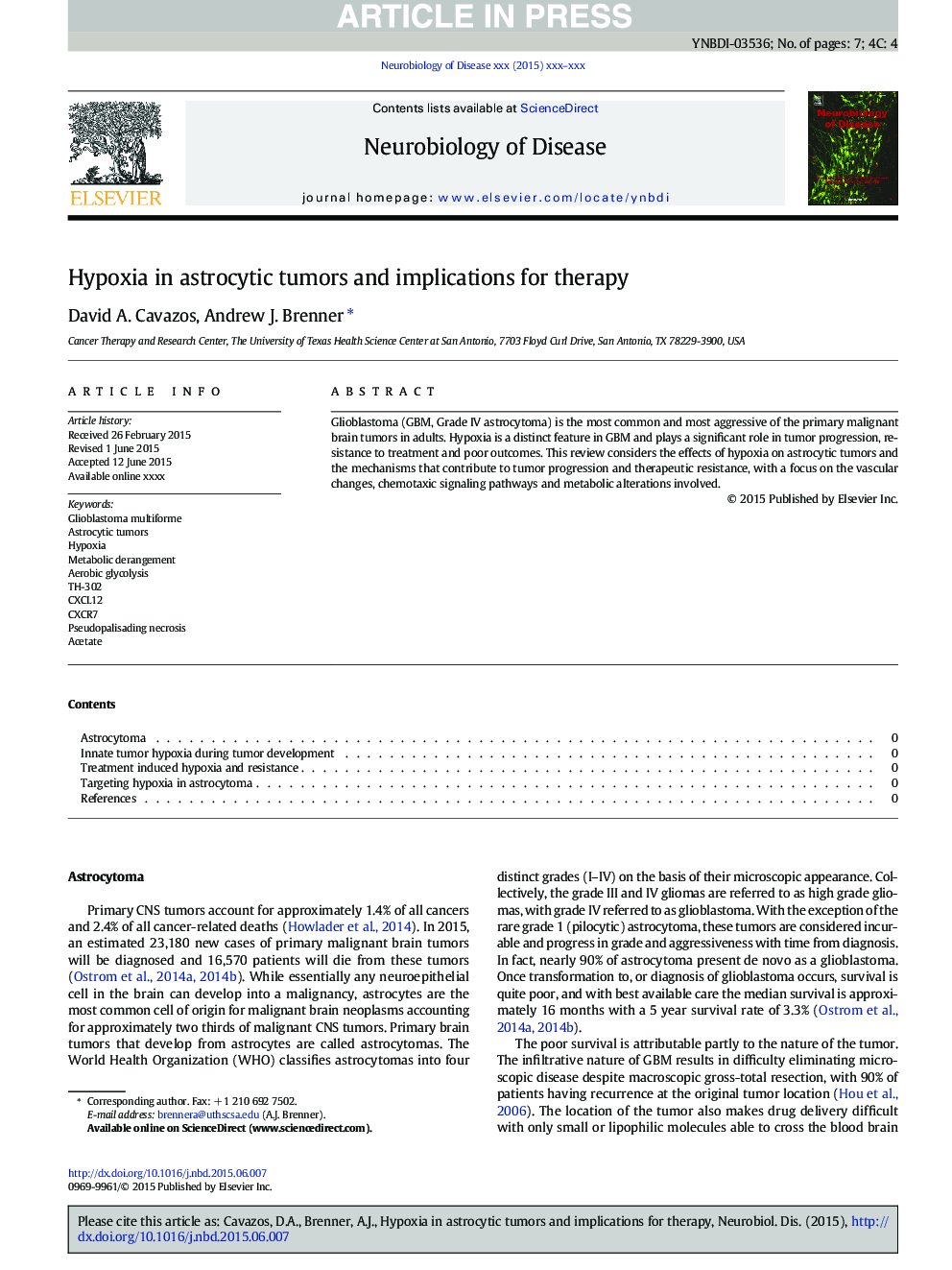| Article ID | Journal | Published Year | Pages | File Type |
|---|---|---|---|---|
| 6021543 | Neurobiology of Disease | 2016 | 7 Pages |
Abstract
Glioblastoma (GBM, Grade IV astrocytoma) is the most common and most aggressive of the primary malignant brain tumors in adults. Hypoxia is a distinct feature in GBM and plays a significant role in tumor progression, resistance to treatment and poor outcomes. This review considers the effects of hypoxia on astrocytic tumors and the mechanisms that contribute to tumor progression and therapeutic resistance, with a focus on the vascular changes, chemotaxic signaling pathways and metabolic alterations involved.
Keywords
Related Topics
Life Sciences
Neuroscience
Neurology
Authors
David A. Cavazos, Andrew J. Brenner,
